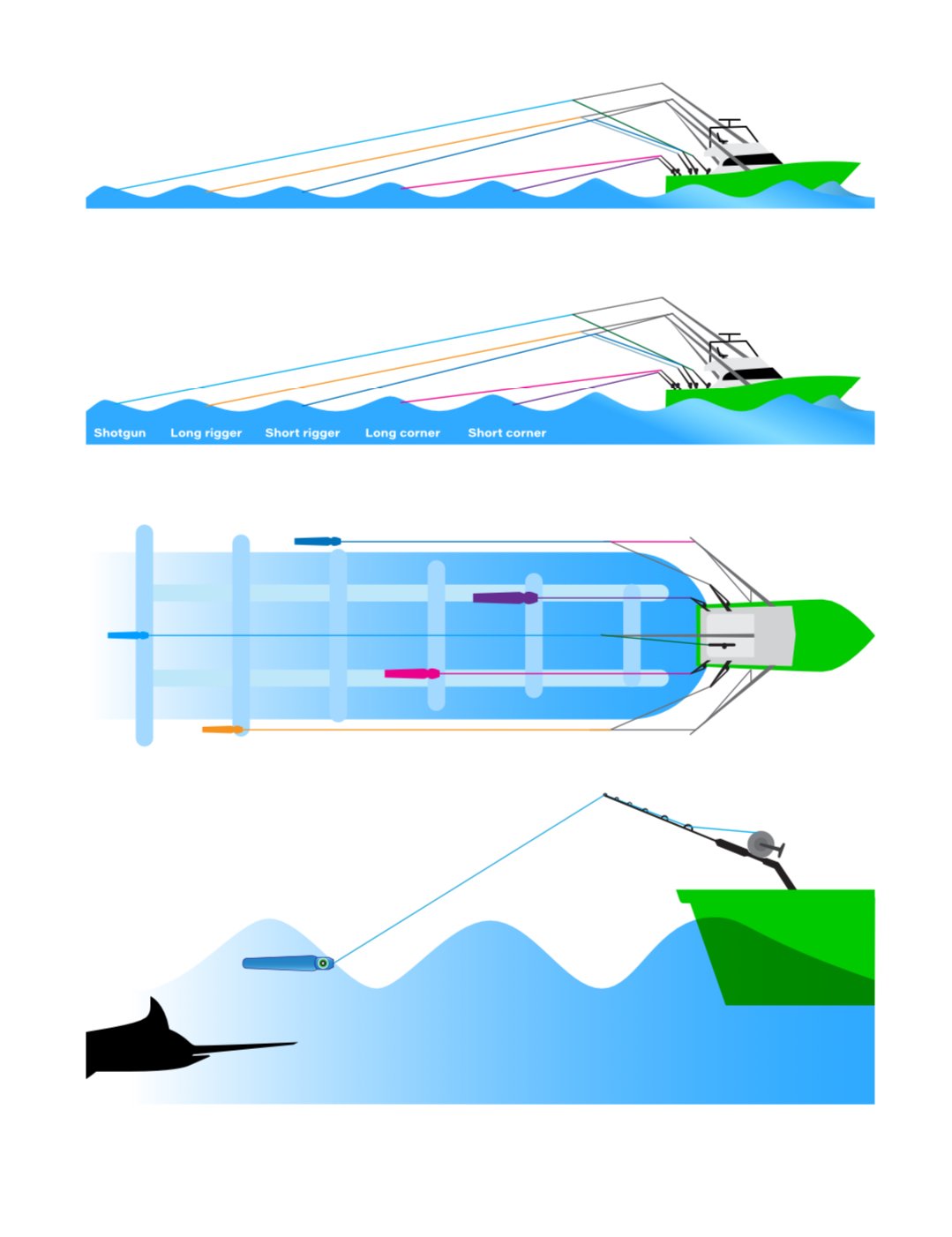Golden Rules of Trolling
Science has told us that pelagic fish will generally spend the majority of their time between the thermocline and the ocean surface. In tropical and sub-tropical climates, when the skies are clear, the sun is beading down once high in the sky and winds are light, it stands to reason that the thermocline and therefore the fish, will be deeper down in the water column. On these days, it can be difficult to raise fish from the deep to attract a bite onto skirted lures. For this reason, whether the science is known or otherwise, you will see crews running downriggers, planers, weights and teasers. For the recreational angler, who may be operating boats well offshore with limited range, trolling from dawn to dusk is not always possible, nor even desired. So, given this knowledge, there are a couple of “golden rules of trolling” that should be kept in mind for the most efficient and effective chasing of pelagic fish.
Whenever possible, fish overcast days
This is due to a reduction in solar radiation and thereby a thermocline closer to the surface. In practice, this is more often than not a rarity in the tropics! So accordingly, it is best to…
Fish dusk or dawn, or when the sun is much lower in the sky
Do not troll into the sun
Just like humans, fish cannot see into a glaring sun, and will not attack a lure whilst lures are being taken directly toward sunlight. So plan your day and efforts around having the sun behind you. Accordingly, be mindful of sunburn and glare off the water!
Troll down current
Do not troll according to your GPS ground speed. Troll according to the current. Use charts, indicators or at trolling speed, cover 360 degrees slowly to work out the direction of the ocean current. By trolling down current, fish will be using more energy and will be more inclined to bite the lure rather than spending time observing it. Trolling down current also provides shorter wash behind the boat.
Ensure lures are set in the face of the wave/wake
Ideally in the bottom third to ensure the fish have easy access to the lure. See diagram on the website.
Set reel drag to 1/3 of the breaking strain of the line
For example, if using 50 pound line class, set 16 to 17 pounds of drag. This should enable successful setting of the hook and provide ample line strength to not lose the fish.
Keep a lookout for any activity on the surface or in the air
Birds up high mean fish will be down lower and vice versa. If there is any “junk” in the water, troll nearby. Often it will have Mahi immediately in the vicinity and quite often Wahoo further below
Do not drive the boat through a bait school
Troll around the extremities / a bit further away. Fish will be concentrated on the bait school until it has gone so be patient.

